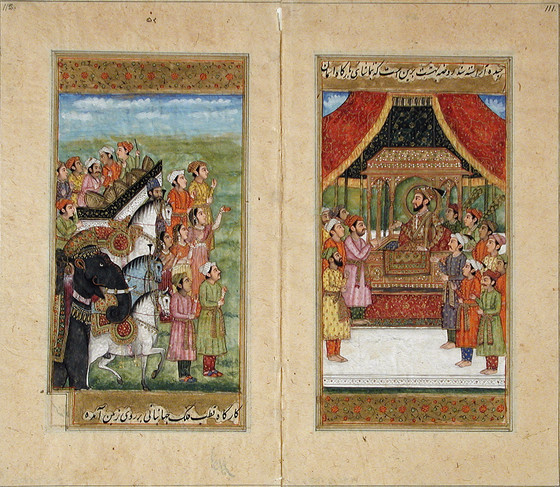Enthronement of Shah Jahan in 1628: a) Accession of Emperor Shah Jahan; b) Reception by Subjects and Drummers, Folios from the Padshahnama (Chronicle of the King of the World)
Please log in to add this item to your gallery.
View comments
No comments have been posted yet.
Add a comment
Please log in to add comments.
Please log in to add tags.
* Nearly 20,000 images of artworks the museum believes to be in the public domain are available to download on this site.
Other images may be protected by copyright and other intellectual property rights.
By using any of these images you agree to LACMA's Terms of Use.
Enthronement of Shah Jahan in 1628: a) Accession of Emperor Shah Jahan; b) Reception by Subjects and Drummers, Folios from the Padshahnama (Chronicle of the King of the World)
India, Delhi, Mughal Empire, circa 1800
Drawings; watercolors
Opaque watercolor, gold, and ink on paper
a) Sheet: 11 3/8 x 6 1/2 in. (28.89 x 16.51 cm); Image: 6 1/2 x 4 1/8 in. (16.51 x 10.4775 cm); b) Sheet: 11 3/8 x 6 1/2 in. (28.89 x 16.51 cm); Image: 6 1/2 x 4 in. (16.51 x 10.16 cm)
Mr. and Mrs. Allan C. Balch Collection (M.45.3.542a-b)
Not currently on public view
